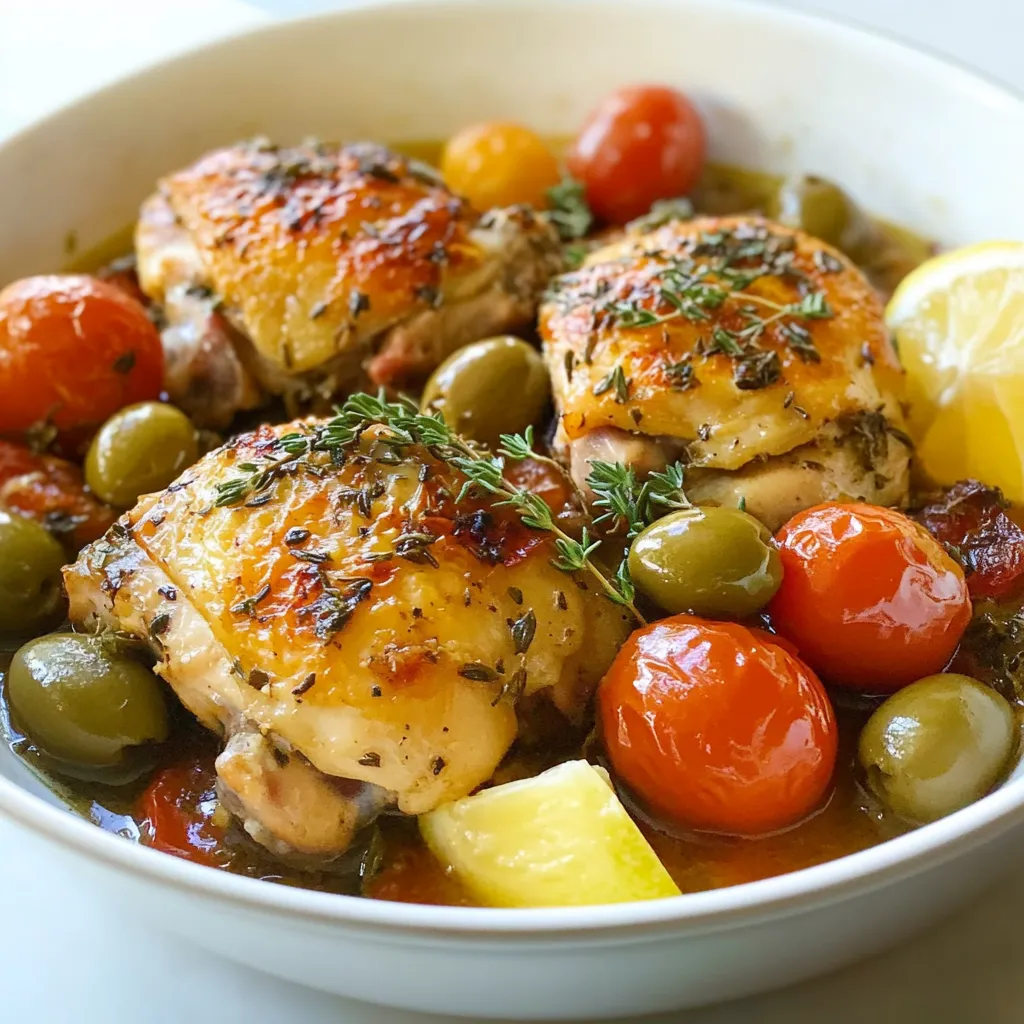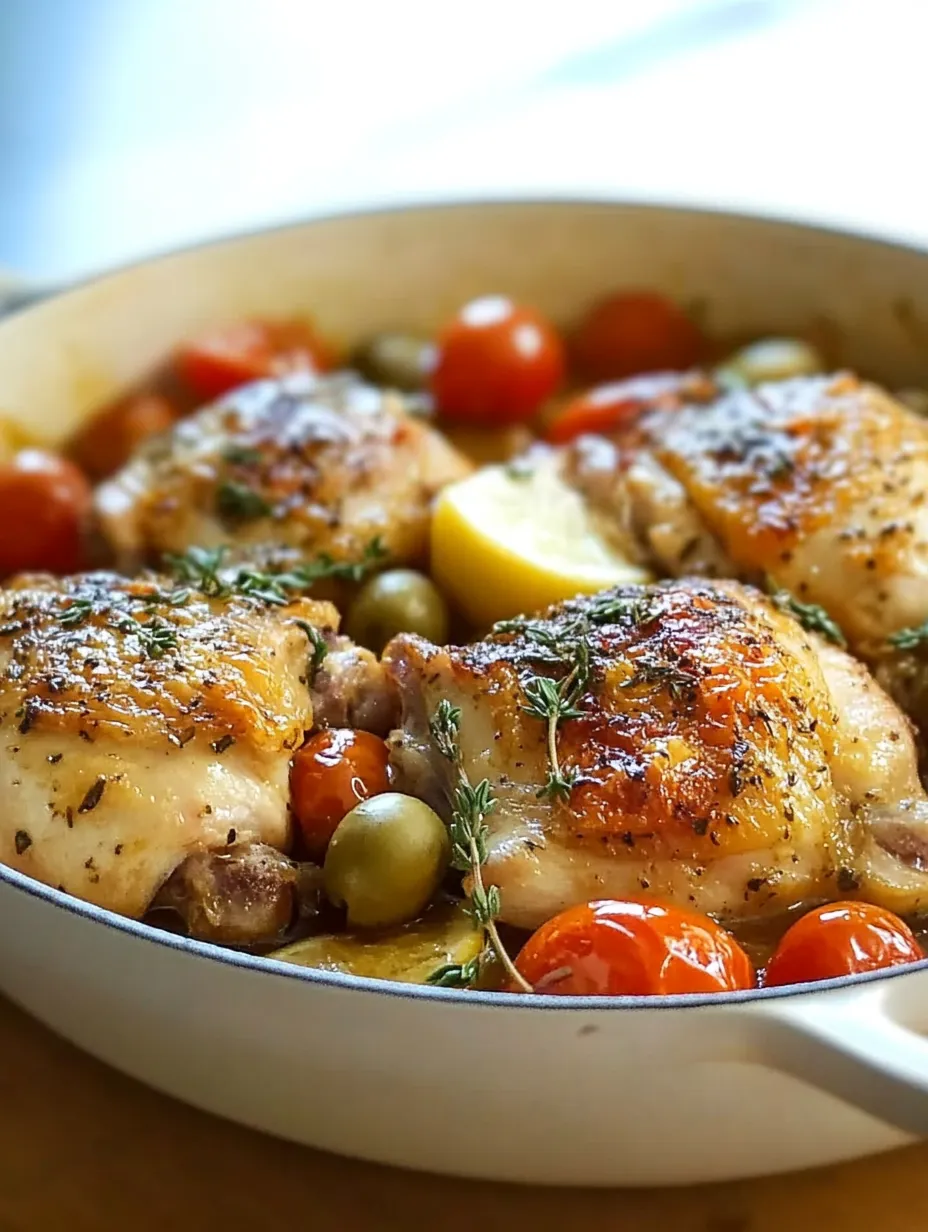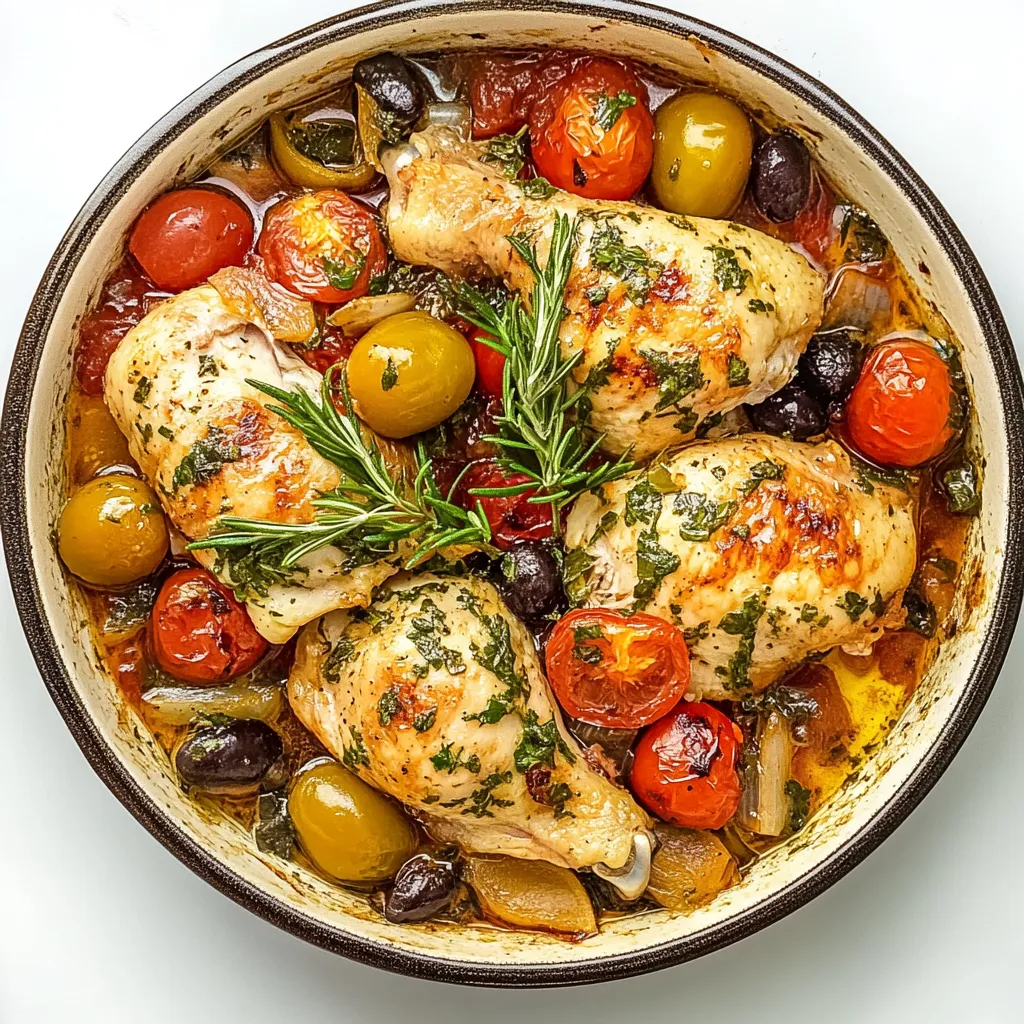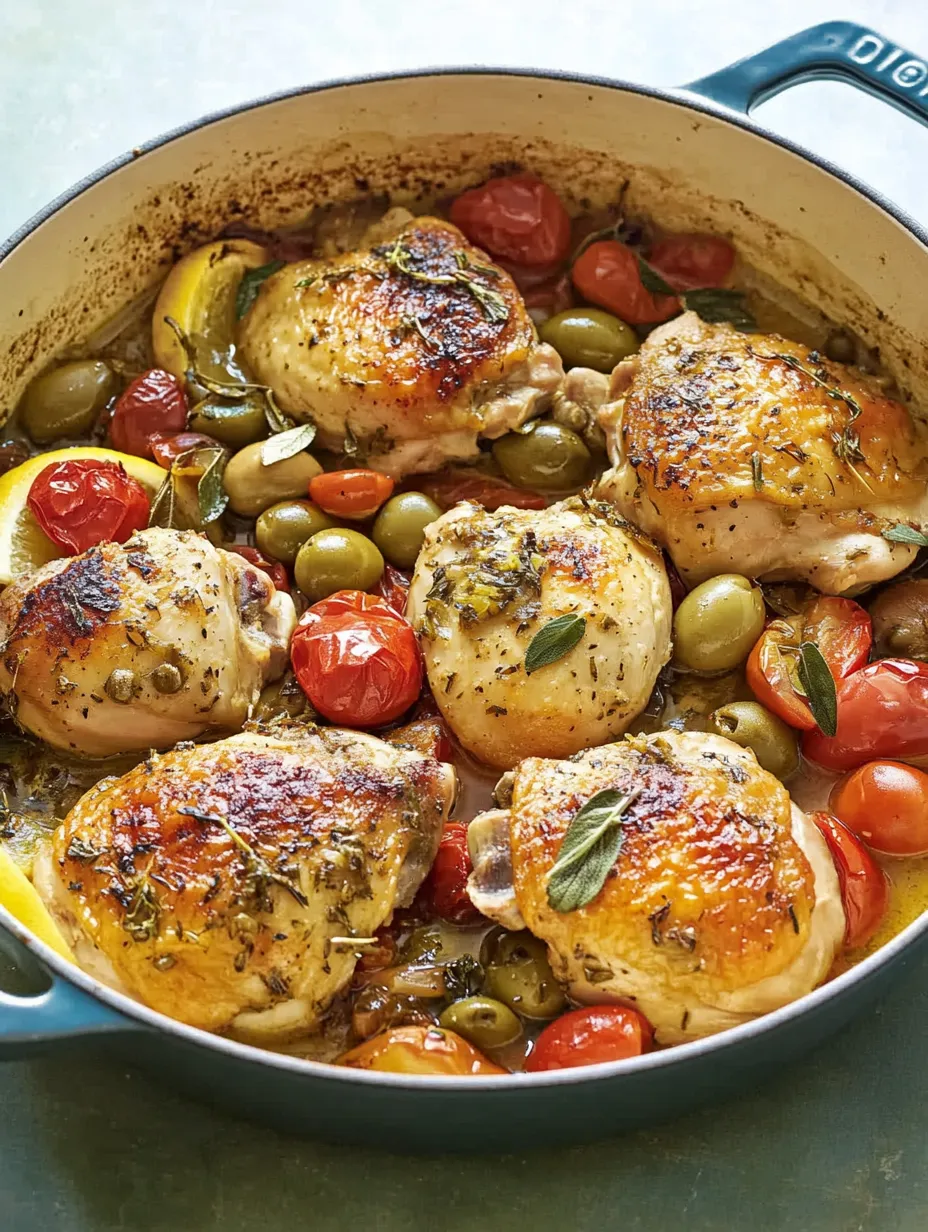 Pin it
Pin it
When Chicken Provençal bubbles away in your kitchen, you'll feel like you've been whisked off to those sunny southern French hillsides. After tweaking this dish for years, I've found that its true charm isn't just about what goes in—it's about understanding how each ingredient plays its part in creating that authentic Provençal vibe. Simple chicken thighs become something magical through proper browning and gentle simmering.
When I made this last weekend, my friends went quiet after their first bite, then everybody wanted to know how I made it. The trick? Don't rush—especially when you're browning the chicken at the start.
Key Ingredients and Smart Shopping
- Chicken Thighs: Go for ones with skin still on and similar sizes—they should look plump with a nice pink color
- Aromatic Herbs: Dried Herbes de Provence work fine, but nothing beats the pop of flavor from fresh thyme
- Olives: The buttery, slightly salty Castelvetrano olives balance everything perfectly
 Pin it
Pin it
Starting Strong
First, make sure to thoroughly pat your chicken thighs dry—this step can't be skipped if you want that gorgeous golden skin. Don't be shy with salt and pepper—this first seasoning sets up all the flavors to come. Let them sit out for 15-20 minutes while you get everything else ready.
 Pin it
Pin it
Perfect Browning Technique
Take your time heating your pan over medium-low heat—going slow means everything heats evenly with no hot spots. Add your olive oil and wait till it just starts to shimmer. Put your chicken in skin-side down and listen for that gentle sizzle sound. Don't touch or move them for at least 8-10 minutes. That patience will pay off with amazingly crispy skin and deep flavor.
Prepping Your Flavor Builders
While the chicken does its thing, get your aromatics ready. Cut shallots into quarters but keep that root end intact so they won't fall apart during cooking. Keep those garlic cloves whole—they'll soften into sweet little bites as they cook. Pick tomatoes that are fresh and firm; they'll slowly break down and thicken your sauce.
Gentle Simmering Magic
After your chicken is nicely browned, flip each piece carefully—if they're sticking, they just need more time. Tuck your shallots, garlic, and tomatoes around the chicken pieces, not on top of them. Sprinkle olives and capers evenly throughout. Add those lemon wedges last so you'll get little bursts of brightness all through the dish.
Choosing and Adding Your Wine
Pick a dry white wine you'd actually drink—I like using a crisp French white like Chablis or Sancerre. Pour it carefully around the chicken, not directly on top, so you don't mess up that crispy skin. You want enough to come about halfway up the sides of the chicken, making the perfect environment for everything to simmer together.
Beautiful Presentation
Just bring the whole pan to the table—it looks rustic and inviting that way. The colors tell their own story: golden chicken, bright red tomatoes, purple-edged shallots, and green herbs make it look as good as it tastes. Put some crusty baguette slices around the edge of the pan so everyone can soak up all that amazing sauce.
French Roots and Tradition
Chicken Provençal really captures what southern French cooking is all about. It comes from Provence with its sunny olive groves, herb-covered hills, and Mediterranean feel. Every family has their own version, and recipes change from one village to the next, but they all keep the heart and soul of this classic dish.
Drink Pairings
Though we cook with white wine, you've got options when serving. A good rosé from Provence works amazingly well, or try a lighter red like Côtes du Rhône. Whatever you pick should work with those herbal notes without taking over the more delicate flavors.
Year-Round Variations
- Summer: Grab those juicy local tomatoes and bunches of fresh herbs
- Fall: Toss in some mushrooms for a deeper, earthy flavor
- Winter: Go heavier on garlic and herbs for more warmth
- Spring: Add some baby potatoes on the side
Choosing the Right Cookware
Getting this dish right starts with the right pan. You need something heavy-bottomed and oven-safe—a good skillet or Dutch oven that spreads heat evenly for that perfect sear. Cast iron works great and gets better each time you use it, while enameled Dutch ovens hold heat really well and clean up easily. Make sure your pan is big enough so everything fits without crowding, or you'll end up steaming instead of properly braising.
Making the Most of Extras
 Pin it
Pin it
If you're lucky enough to have some left, it actually tastes better the next day. Keep the chicken and sauce separate from any sides. When it's time to reheat, put the chicken skin-side up in a covered dish with a splash of white wine or chicken broth. Warm it gently in a 325°F oven until it's just heated through—about 15-20 minutes.
Smart Meal Planning
This dish fits perfectly into your weekly cooking plan. You can prep everything the day before and store it separately. Most of the cooking time doesn't need your attention, so you can work on side dishes or other things while the oven does the work. Try making a double batch when you can—leftovers make great sandwiches or salad toppings.
Tasty Side Options
- Smooth Polenta: It soaks up all that amazing sauce
- Oven-Roasted Fingerlings: With a sprinkle of herbs
- Fresh Butter Lettuce: With a simple light dressing
- Tender Green Beans: Mixed with garlic and slivered almonds
Closing Thoughts
What makes Chicken Provençal so special is how it keeps things simple while showing real respect for each ingredient. After making this countless times, I've learned that success comes from seeing how each component develops its flavor. Watching basic ingredients slowly transform into this fragrant, cohesive dish really shows you what French countryside cooking is all about.
Frequently Asked Questions
- → Can I swap thighs for breasts?
- Thighs are juicier for braising, but breasts work if cooked for less time.
- → What's a good replacement for white wine?
- Mix chicken broth with a splash of white vinegar for similar notes.
- → What makes Herbes de Provence special?
- It's a mix of thyme, rosemary, oregano, basil, lavender, and other herbs commonly used in French cooking.
- → Can I prep this dish ahead?
- Absolutely! The flavors deepen overnight. Reheat gently before serving.
- → What cookware works best?
- Use a big (12”+) deep skillet or Dutch oven safe for both stovetop and oven.
